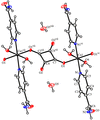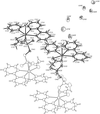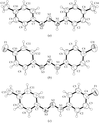issue contents
May 2005 issue

Cover illustration: A simulated precession photo of the h0l plane showing the twin relationship in reciprocal space as a twofold rotation about a*. The radii of the circles indicate the intensities of the reflections. The main twin domain is drawn in open circles; the minor twin domain, with a twin fraction of 0.319 (2), is drawn in filled circles. The approximate primitive subcell in reciprocal space, covering both twin domains, is obtained by halving a*. See Lutz, Spek, van der Wiel & van Walree [Acta Cryst. (2005), C61, o300-o302].
inorganic compounds














metal-organic compounds






 access
access

 access
access













organic compounds




 access
access

 access
access









 access
access

 access
access





 access
access

 access
access





 access
access

 access
access



 access
access





 journal menu
journal menu
























































